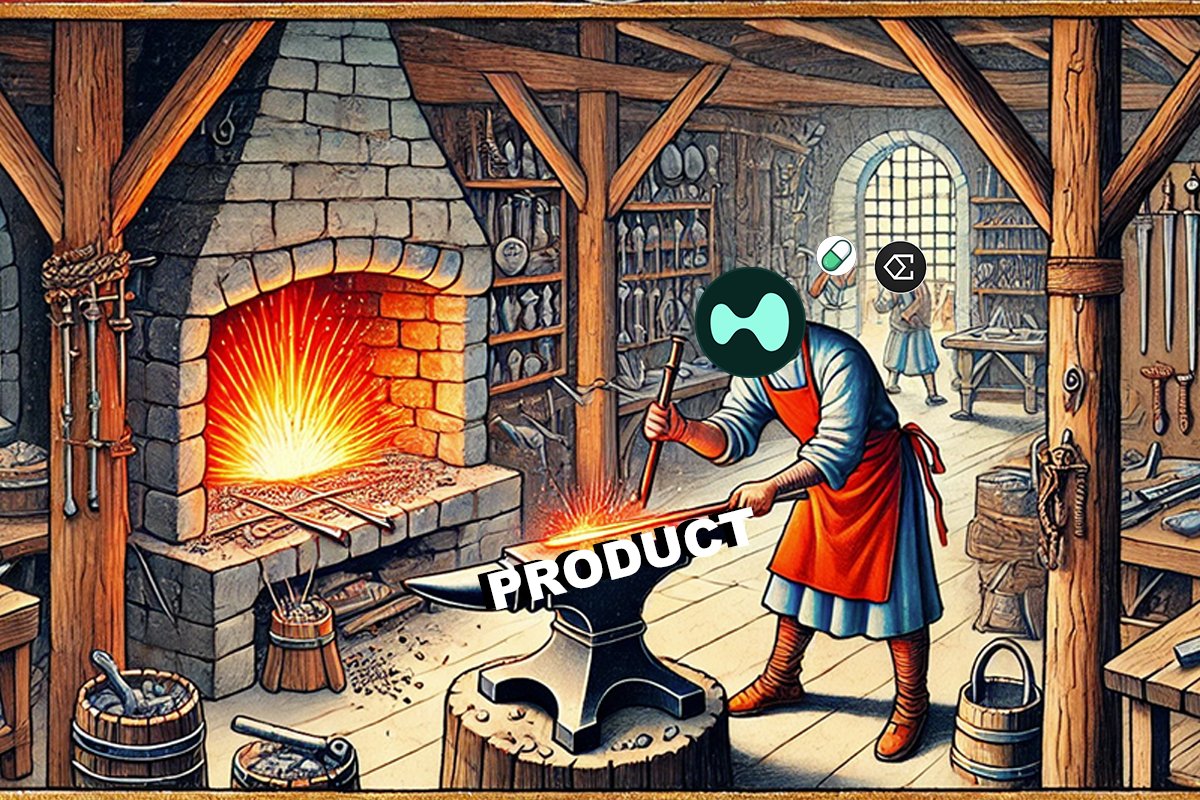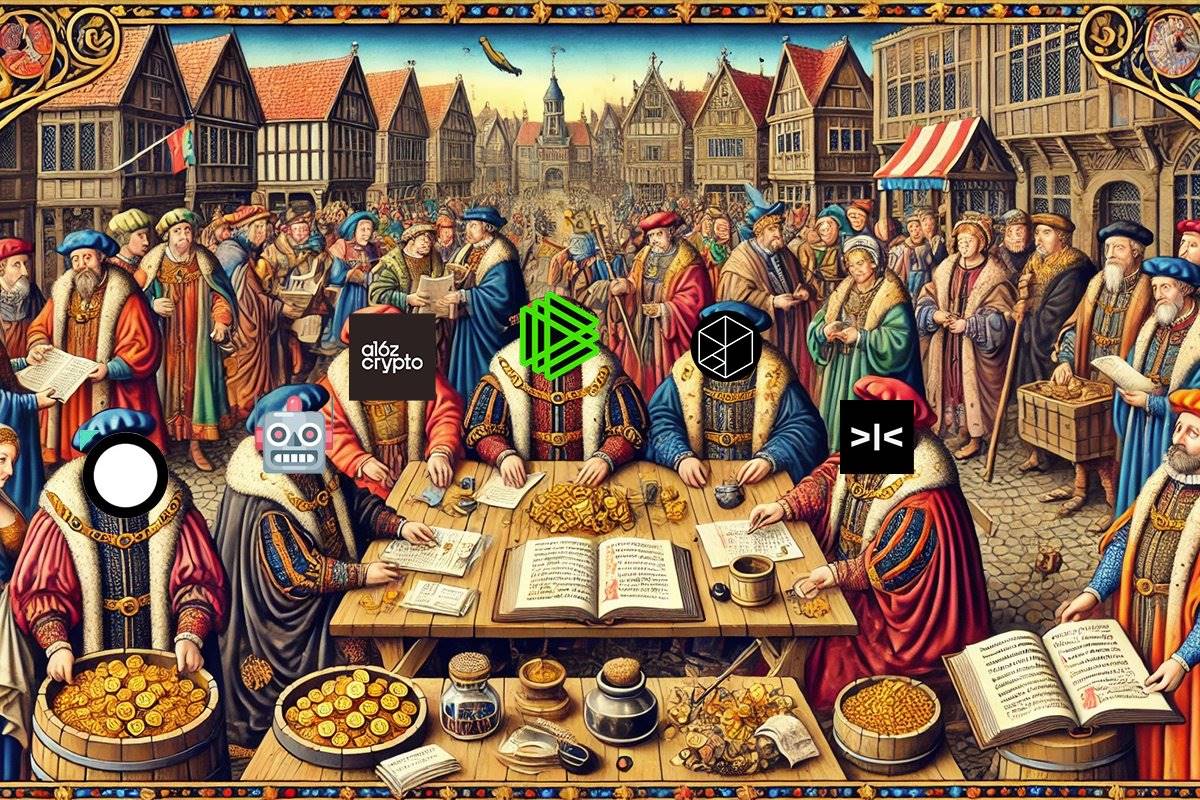Tale of Two Tokens: What Ethena and HyperLiquid Teach Us
 DC
DC
HyperLiquid has become a top 20 token (if you count FDV) within weeks of its initial launch. It did this without any major centralized exchange listings. Its supporters are primarily traders and users who swear by the product, much more akin to fans of something like BeReal / Instagram than “traditional” financial cults in crypto like Link Marines. The $HYPE airdrop did not have (that many) strings attached, and made many people rich, but also many people refused to sell, they believed, and I think this is the core difference between HyperLiquid and many other projects in the space at the moment, people believe in HyperLiquid’s vision AND that they will make money. This holy symbiosis between vision and execution on one hand and fundamentals is perhaps unique to the extent in which it worked with HyperLiquid, but can also to a lesser extent be seen with one of this year's other most profitable and widely followed DeFi projects: @ethena_labs. This article goes over how Ethena and @HyperliquidX are similar, building core products that are heavily used by natives, and also where they differ to help inform the reader about what makes systems successful.
Laying the Foundation: Product

A good product is always hard to make, but in crypto there is this bizarre mentality that a good product is “impossible” or that there isn’t PMF or that it simply isn’t “big” enough or it “has already been done”. These are all fallacies. The largest educated criticism of Ethena was that what Ethena was doing had already been attempted by decentralized protocols like UXD in the past. However, Ethena differentiated by tapping into centralized liquidity via custodians, solving the liquidity issue and being able to earn base stETH / restaking asset yield. This was a relatively minor tweak, but it made Ethena’s product scalable and solid. Additionally, by having USDe and sUSDe, almost akin to ETH vs stETH, yields would be inherently higher on Ethena compared to just running the strategy on your own.
HyperLiquid was not the first decentralized derivatives platform, far from it. However, HyperLiquid innovated around speed (deposits process incredibly quickly), liquidity (HLP) and distribution (vaults). HyperLiquid’s platform was reliable, and rarely broke down, while competitor systems have broken down for hours or even days, and one platform even faced a reorg that forced it to create google forms to ask users how much they had lost. This was a terrible user experience and also terrible for liquidity providers and traders, who never knew if they were actually going to be able to withdraw or deposit funds, so it was a dual user experience and financial / technical issue for users that HyperLiquid eliminated, earning it the trust and support of its users.
Building Out: Distribution & Execution

Ok, so Ethena and HyperLiquid both have good products, but that doesn’t necessarily mean people will magically find them. How do you get people to test the product and improve it? Well, in the case of both Ethena and HyperLiquid, the answer is talk to as many people as you can. On my anon account, I was actually reached out to by the Ethena team before they had $20M TVL, I would have to deposit via signing a contract and locking money for a certain period of time in exchange for receiving a fixed minimum rate, and I eventually didn’t do it (big mistake ofc). However, what I found incredibly impressive about the Ethena team was their ability to take advantage of Other People’s Networks (OPNs). Seraphim (@MacroMate8) is a master at this. I was reached out to by @dcfgod, arguably one of the best angel investors in the space, and he reached out to me but also the @templedao team, other RFV traders and large traders, and in general most of his network. For DCF God this was fantastic because he believed in the product and in the team, and so these introductions were beneficial to the people in his network. At the same time, they were incredibly useful for Ethena, which is why they allowed him to invest as an angel. This is also reflected with @CryptoHayes involvement, as he is probably one of the best storytellers and also platforms to talk to users in the space, and he happens to write checks.
In the case of HyperLiquid, Jeff and other members of the team cast and incredibly wide net. They DM’d everyone from @HsakaTrades on twitter to my RFV trading buddy @burstingbagel. They got as many people on the platform as possible and just started making stuff the community wanted, including vaults which eventually helped to create the HLP, which allowed HL to have deep liquidity without needing market makers and the often costly deals that come with market-maker provided liquidity on DEXs. This direct relationship between the community and users of the product and the HyperLiquid team made users feel heard, important, and made them feel invested in the project and like they were PART of the project rather than outsiders looking in.
Maintaining Control: Moat and Network Effects

All good projects spawn copycats / competition. Ondo has OpenEden, Eigenlayer has Symbiotic, there is Morpho and Euler, Aptos and Sui, and on and on and on. Good projects, however, identify and solidify their moat to such a degree that they are able to reinforce their product and make it far more competitive.
Take the example of stETH / Lido. It is clearly the market leader, even though in theory at a base product level it is replicable. It is not incredibly hard to run a validator, earn returns for users, and create a wrapped token. What is hard to replicate or compete with is the massive liquidity stETH had and its integrations with lending protocols and DeFi more broadly. These moats meant that for users, it often made far more sense to use stETH, even if in theory they earned slightly less then using a competitor, because they could use this stETH in DeFi. Ethena has done the exact same playbook for the funding rates arbitrage. It is integrated with every major protocol that is to be integrated with at least in ETH DeFi and on increasingly more centralized exchanges. What the moats Ethena has around liquidity, acceptability / composability, and higher yield (at scale) amount to are a myriad of features for users that maintain user loyalty.
In the case of HyperLiquid, a major moat for them is in the name, liquidity. HyperLiquid’s HLP is designed to be a good provider of liquidity to users, allowing for new markets to grow and for users to always be able to have a buyer / seller of last resort. The more users use HyperLiquid, the better pricing becomes, and the more incentive there is for additional users to use it, and so on.
HyperLiquid is now looking to reinforce its dominance by allowing projects to build on top of it via a separate EVM compatible chain which can interact with HyperLiquid spot / derivatives positions. This will allow relatively seamless and more capital efficient market making and delta neutral strategies for traders, and further increase the features available to its users, again solidifying its position. In theory, HyperLiquid when it becomes open source could be forked, but the forked version would not have the HLP, it would not have all of the users, it would not have the liquidity. The product itself, while it is fantastic, is not everything when it comes to lasting for a long time, what is most important is the ability to solidify a project’s moat, and this is what Ethena and HyperLiquid have continued to work on even as they apparently have near total dominance over their respective markets.
Point of Divergence: Funding Paths and Airdrops

This section is where there starts to be major differences between the Ethena and HyperLiquid approaches that are not just stylistic but also incredibly substantive. Ethena’s product is providing liquid access to delta neutral yield. HyperLiquid’s product is a decentralized derivatives protocol. Ethena, inherently because of its model, needs to use the existing platforms in order to be able to scale, and a good way to be able to ensure that is to get investments from the exchanges to incentivize them. HyperLiquid, on the other hand, is aiming to replace these exchanges, it does not intend to co-opt them and thus does not need them.
HyperLiquid’s team additionally are famously good HFT traders, and did not need to raise capital. The Ethena team, while successful in their own right, had not made the tens of millions of dollars that might have been required to build out Ethena and ensure its long term survival and the ability to entirely focus on the product rather than having to look at profitability. In theory, Ethena could have decided not to raise, but by raising they were able to increase their likelihood of success. From a game theory perspective, especially financially, people are much more confident with teams that 1) Have extensive experience in the exact field, like HL or 2) Have been heavily vouched for / supported by people of authority. Ethena’s team, while good, could not claim the same accolades specifically in delta neutral trade management, as HyperLiquid’s team could when it came to understanding exchange infrastructure, which is a core facet of HFT trading. Ethena getting these major players to invest for social support / enabling them to grow quicker and also for eventual integrations was likely the best decision for their specific product.
HyperLiquid’s decision to not raise and to functionally take on the risk of paying for HyperLiquid’s expenses in order to allow for a larger airdrop and to not have systematic sellers (VCs), was likely the best decision they could have made given their product and the fact that they will actually be combative to most existing exchanges, as they wish to replace them.
The Ethena $ENA airdrop also went rather well, with larger holders being forced to hold for longer periods of time then retail users, and an ingenious use of remilios to pill the community on Ethena. That being said, it was nowhere near as widely liked or appreciated as the $HYPE airdrop, which had no real strings attached and which also instead of creating vesting for larger accounts, HyperLiquid actually limited the airdrop to larger accounts that had probably been sybiling, giving them a fraction of their initial value but allowing them to be fully unlocked after the fact.
Ethena’s points program was also explicit and moved to shape behavior of users, whereas HyperLiquid’s was seemingly arbitrary, although it did disproportionately reward volume / takers and users that got liquidated, but there was no formula.
Conclusion: Path Dependence

My conclusion, which I think is an important takeaway I have yet to really see from any of the articles about HyperLiquid’s success is that HyperLiquid executed beautifully for the vision and product path they had in mind. Ethena is executed amazingly for its product vision becoming the fastest growing stablecoin protocol ever. They had radically different approaches to the token and capital raising, but their decisions were informed by their conviction in their path and in what their end product will look like. There is no one size fits all for how to manage airdrops and tokenomics, rather they are dynamic equations you must seek to understand in the context of your product and what your users want or need. If you do that well and have your decision making reflect the ideal path for your product, you will find success.
Following the success of Round 1 and Round 2, with a total of $4.4M in Permanent liquidity rewards, BNB Chain is launching Round 3 – The $100M BNB Chain Permanent Liquidity Program. This initiative aims to further enhance BNB Chain’s ecosystem liquidity and foster project growth by incentivizing exchanges to list native BNB Chain tokens, strengthening on-chain liquidity and solidifying market foundations.
BNB Chain/2025.03.24

Beyond the technical jargon of AI and public blockchains, BNB Chain continues to explore new possibilities.
TechFlow/2025.02.05

Actual.AI, a revolutionary DeFAI project merging AI Agents with DeFi on BASE chain, just released its demo today and was retweeted by the founder of Virtual.
Ben/2025.01.22

January 18, Hong Kong – “If you want to cash out $1 million on day one, there are other platforms for that; but if you want to build something that lasts, build it on Virtual.” These are the words of Wee Kee, co-founder of Virtual, a decentralized AI society that’s quickly becoming one of the most talked-about projects in the web3 community.
Yuna @lookonchain/2025.01.22

BIO Protocol has become Binances first Launchpool project of the year, airdropping $BIO to $URO and $RIF holders. Recently, theres been a noticeable increase in DeSci discussions, leading to price surges across related tokens, suggesting a potential second wave for the entire sector.
Woody/2024.12.27

An investor shares his rules for profiting from memecoins, arguing that success comes from understanding key market mechanics, not gambling. He highlights the importance of analyzing a token’s community strength and tokenomics, along with proper due diligence to avoid scams. The core advice is to manage risk, never risking more than 10% of your capital on a single trade.
Alex Mason/19 hours ago

Hot feeds
A trader profits $448K by monitoring #Binance's new listings!
2024.12.13 17:37:29
A smart #AI coin trader made $17.6M on $GOAT, $ai16z, $Fartcoin,$arc.
2025.01.05 16:05:18
A $PEPE whale that had been dormant for 600 days transferred all 2.1T $PEPE($52M) to a new address.
2024.12.14 10:35:27
A sniper earned 2,277 $ETH ($8.3M) trading $SHIRO within 18 hours!
2024.12.03 23:09:08
Last week, funds have flowed into #Bitcoin, #Ethereum, and #Hyperliquid.
2024.12.16 14:48:36
A whale exchanged WIF and Bonk positions for Fartcoin!
2024.12.25 11:01:14
MoreHot Articles

The 30-Year-Old Entrepreneur Behind Virtual, a Multi-Million Dollar AI Agent Society
2025.01.22

10 promising AI Agent cryptos
2024.12.05

10 smart traders specializing in MEMEcoin trading on Solana
2024.12.09

How did I turn $1,000 into $30,000 with smart money?
2024.12.09

A trader lost $73.9K trading memecoins in just 3 minutes — a lesson for us all!
2024.12.13

What is $SPORE? Let us take you through the on-chain records to show you how it works.
2024.12.25


 App Store
App Store Profile
Profile Security
Security Sign Out
Sign Out
 Feeds
Feeds
 Articles
Articles Source
Source
 Add to Favorites
Add to Favorites Download image
Download image Share x
Share x Copy link
Copy link
